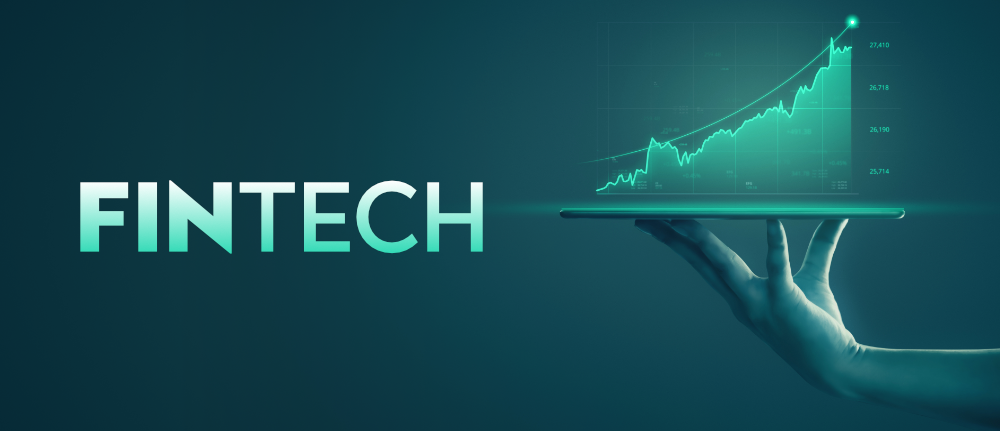What is Fintech?
Even self-proclaimed Luddites moved a large portion of their daily lives online twelve months after the coronavirus pandemic first struck the United States.
Managers who had no intention of conducting meetings remotely perfected the skill of projecting professionalism on Zoom from the waist up. College professors mastered the virtual classroom. And parents with busy schedules traded strolling the grocery aisles for scrolling through Amazon Fresh.
The finance sector was affected by this quick shift to “all online, all the time.” Banks are trying to offer seamless digital services as clients demand online interactions that resemble in-branch experiences. The use of contactless payments is at an all-time high.
This shift has given rise to the term: “Fintech.” Fintech provides various tools for addressing broader personal finance issues like budgeting, goal-setting, and tracking net worth. Does this mean that the future of finance is fintech?
Let’s dive deeper into fintech and explore what this industry is all about.
What is Fintech?
Fintech, or financial technology, is the term used to describe the new wave of digital and technological innovations reshaping how we manage our finances.
Fintech refers to software, algorithms, and applications for computer- and mobile-based tools that enable individuals and businesses to manage their financial affairs. In certain circumstances, it also incorporates hardware, such as virtual reality (VR) trading platforms or smart, connected piggy banks.
Fintech platforms enable basic tasks like depositing checks, moving money between accounts, paying bills, or applying for financial help. They also include technically complex concepts like peer-to-peer lending or crypto exchanges.
From mobile apps that let us tap to pay for our morning coffee to robo-advisors that manage our investment portfolios, fintech is all around us. Nearly every sector, market region, and business style have use cases for fintech.
Banks use fintech for back-end operations—for instance, tracking account activity in the background—and consumer-facing products, like the app you use to check your balance.
Businesses rely on fintech for payment processing, conducting e-commerce transactions, keeping track of finances, and, more recently, requesting help from the government through programs like the Payroll Protection Program (PPP). More and more businesses are shifting to fintech in the wake of the COVID-19 outbreak to enable features like contactless payments or other tech-driven transactions.
Individuals use fintech for various tasks, from tracking their expenditures to tax calculations. Fintech can also help people save money by identifying opportunities for better interest rates on loans or credit products.
How Does Fintech Work?
FinTech simplifies financial transactions for individuals and organizations, increasing their accessibility and often lowering costs. It can also be applied to businesses and services that enable highly secure internal network transactions using AI, big data, and encrypted blockchain technology.
Fintech generally aims to eliminate procedures that can be unnecessary for all parties engaged in the transaction process. In the past, this may have meant introducing a check instead of relying on cash. However, with digital banking and other technological innovations, fintech has become much more expansive.
Applications of fintech now include peer-to-peer (P to P) payments, which allow individuals to send and receive money without going through a financial institution. Other famous examples include mobile banking, digital wallets, and cryptocurrency exchanges.
Fintech can be used to streamline the process of applying for and receiving a loan. In the past, this may have meant filling out a paper application and waiting weeks for a response. However, fintech can now make it possible to apply for a loan in minutes and receive funds almost immediately.
The Evolution of Fintech
Fintech is not a new concept. A report by Arneris, Barberis, and Ross claims that there are several phases of fintech. There was a particular level of market differentiation in each of these eras, which changed how individuals interacted with money. Let’s look at these periods:
- Phase 1: 1886-1967
The infrastructure needed to support globalized financial services was built during this phase. In 1866, the first transatlantic cable was laid, allowing for real-time communication between London and New York. This was followed by establishment of major stock exchanges like the New York Stock Exchange (NYSE) in 1886 and the London Stock Exchange (LSE) in 1887.
The first electronic fund transfer system was made possible by Fedwire in the USA in 1918, utilizing telegraph and Morse code technology. In 1967, Barclays installed the first ATM.
- Phase II: 1968-1989
This phase was characterized by increased regulation and standardization of financial services. The first computerized stock market in the world, NASDAQ and SWIFT (Society for Worldwide Interbank Financial Telecommunications), a system for financial institution communication that facilitated the high volume of international payments, were established in the 1970s.
The development of bank mainframe computers during this period (as well as a “Gordon Gecko” sense of Wall Street style…) continued into the 1980s. And as online banking expanded throughout the 1980s, people’s business practices changed. The online revolution also caused a change in how people viewed financial institutions.
- Phase III: 1990-2007
This phase saw the internet’s rise and financial services’ digitization. In 1998, PayPal was founded, which allowed for easy person-to-person payments. In the early 2000s, online banking became mainstream as more and more people became comfortable with the internet.
In 2003, the first bitcoin transaction took place. The global financial crisis of 2008 marked the end of this fintech era and served as the motivation for innovation during the phase that followed.
- Phase IV: 2008-2019
In the wake of the financial crisis, a lack of confidence in banks combined with legislative change allowed new providers to enter the market. Bitcoin came in 2009, followed by other cryptocurrencies utilizing blockchain technology.
The start-up era arrived, with consumers’ and investors’ appetites for innovation fueling a flood of new goods and services. New technologies opened up to make it simpler to create digital banking products using Open Banking, enabling third-party organizations to access financial data.
- Phase V: 2020- Present
Present- The COVID-19 pandemic forced a move to digital overnight. Financial institutions had to adapt their services to cater to a digital-first world rapidly. Fintech has been demonstrating its worth in the face of the coronavirus pandemic, despite some of its models struggling.
The pandemic has also created opportunities for new fintech companies to emerge and offer solutions to the unique challenges that have arisen. The financial services industry isn’t frequently associated with flexibility. But in today’s world, consumers and business owners increasingly want adaptability and quick iteration in addition to instant satisfaction.
The Future of Fintech
Over the years, fintech has evolved and changed in response to developments within the broader technology sector. In 2022 and the years to come, the following trends will dominate:
- Digital Banking– Access to digital banking is now simpler than ever. Many customers currently manage their finances through digital-first banks, apply for and repay loans, and buy insurance. The global market for digital banking platforms is anticipated to expand at a compound annual growth rate (CAGR) of 11.5 percent by 2026, suggesting that this sector will continue to rise.
- Blockchain– Blockchain technology enables decentralized transactions without the involvement of a government body or other third-party organization. Since its inception, blockchain technology and applications have expanded swiftly, and we expect to see a continuation of this trend as more businesses adopt high-tech data encryption.
- Artificial Intelligence (AI) and Machine Learning (ML)- Financial institutions rely on AI and ML technologies to obtain insights from large data sets. These tools enable better customer service, fraud prevention, and risk management. According to Mordor Intelligence, the global AI in fintech market is expected to grow at a CAGR of 41.0 percent from 2019 to 2025.
- Regulatory Changes: As the fintech industry expands, we expect to see more stringent regulations emerge to protect consumers. In particular, data privacy and security concerns will be at the forefront of policymakers’ minds.
How Fintech Affects You
Fintech speeds up procedures like requesting a credit score report or conducting an international money transfer that used to take days, weeks, or even months to complete.
Fintech provides access to a broader range of financial products and services. In the past, these were only available to people with high incomes or a lot of money to invest.
There have been speculations about how fintech will hasten operations slowed down by red tape, such as allocating economic stimulus funds. Fintech also has the potential to increase financial inclusion since it can meet unbanked people’s needs in places where institutional or governmental support is missing.
Look no farther than robo-advisors—digital platforms that offer automated, algorithm-informed investment choices and financial planning guidance with little to no human oversight—to demonstrate precisely how far fintech has transformed the financial services industry into a Jetsons-style reality.
Conclusion
Fintech is a rapidly-growing industry that offers innovative solutions to the unique challenges faced by the financial services sector. The global economy, corporate landscape, and fabric of contemporary society as a whole are all officially crucial players in the growth of fintech. The field is vast, expanding quickly, and it’s here to stay.



